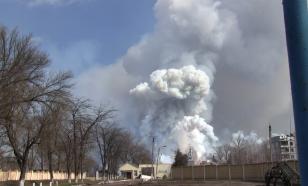Polluted air is dangerous to our children
Many children exposed to polluted air have poorly developed lungs at age 18 — a deficit that may put them at risk for respiratory illness and other health problems later in life, a study out today says. Scientists have known that smog can sicken or, in extreme cases, even kill people. But the new study, published in The New England Journal of Medicine, suggests that daily exposure to polluted air could leave teens with lungs that will never function they way they should. "We found some significant deficits in growth for kids breathing the most polluted air," says W. James Gauderman at the University of Southern California, who with his colleagues studied 1,759 fourth-graders living in 12 Los Angeles suburbs in 1993. For eight years, the team kept track of lung development and the amount of smog in these areas. The team found that teens living in the most polluted areas were nearly five times more likely to have very low lung function: These kids had less than 80% of the lung function expected for their age. In most cases, the teens have enough lung capacity to play soccer and do most other daily activities without any problems. But the deficit when added to the normal age-related decline in lung function could cause trouble years later, says C. Arden Pope, an air pollution expert at Brigham Young University, publishes the USATODAY. According to 9news, a lengthy study of children raised in and around Los Angeles, California shows exposure to pollution caused reduced lung capacity putting them at risk for illness and premature death. Researchers found that in the study group about 8 percent of 18 year olds had lung capacity less than 80 percent of normal. That compares to about 1.5 percent of those in communities with the less pollution. The effects were the same for boys or girls, and whether or not the children had asthma or smoked. "We're seeing air pollution effects on all kids, not just sensitive subpopulations, " said lead researcher James Gauderman, associate professor of preventive medicine at USC's Keck School of Medicine. Researchers at the University of Southern California studied 1,759 children in 12 Southern California communities from spring 1993 through spring 2001. They tested their lung capacity annually between ages 10 and 18. Those are the years when lungs grow substantially and reach full capacity. Reduced lung function was linked to high levels of nitrogen dioxide, vapor containing nitric acid and other acids, and carbon contained in the tiniest particles of soot, which can penetrate deep into the lungs. In California, 90% of the children under the age of 14, live in areas that fail to meet state and federal air quality standards. 127 Million Americans half of the nation's population live in regions with air quality that does not meet federal standards for certain air pollutants. The results of this new study, conducted by researchers at the University of Southern California Keck School of Medicine, are published in this week's issue of the New England Journal of Medicine. "This is the longest study ever conducted on air pollution and children's health," said Dr. Kenneth Olden, director of NIEHS. "It shows that current levels of air pollution have adverse effects on lung development in children between the ages of 10 and 18." Each year, pulmonary function data were collected from 1,759 children as they progressed from 4th grade to 12th grade. The researchers also tracked levels of air pollutants like nitrogen dioxide, acid vapor, elemental carbon, and particulate matter in the 12 Southern California communities where the children lived. The study encompassed some of the most polluted areas in the greater Los Angeles basin, as well as several less-polluted communities outside the Los Angeles area. Over the eight year period, researchers found that children living in the most polluted communities had significant reductions in their "forced expiratory volume" — the volume of air that can be exhaled after taking a deep breath — as compared to children living in communities with cleaner air. In healthy people, lungs grow to full capacity during the teenage years, but typically stop growing at age 18. Then, lung capacity gradually declines. Adults begin to lose lung function by 1 percent each year after age 20, reports News-Medical.
Read earlier news stories by PRAVDA.Ru
&to=http:// english.pravda.ru/politics/2003/04/08/45760.html ' target=_blank > Pravda.RU Canine Units Contributed to Security at Chechen ... &to=http:// english.pravda.ru/main/2003/11/10/51107.html ' target=_blank> Pravda.RU For 75% of Russians, each breath hurts
Subscribe to Pravda.Ru Telegram channel, Facebook, RSS!


